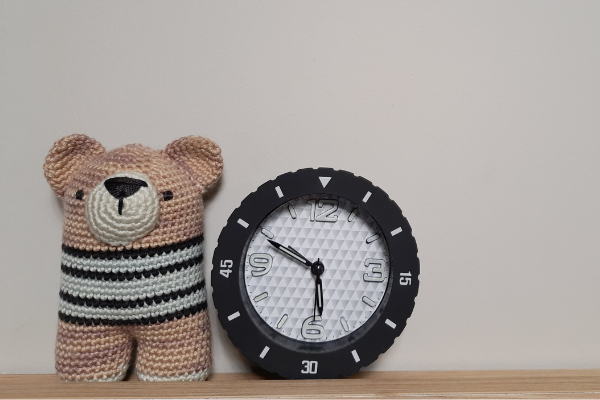9 Ways To Prepare Your Children For When The Clocks Go Forward

Right about the time when you get your toddler, young child or teen on a good sleep schedule, the clocks ‘Spring’ forward and destroy all your hard work.
While it’s tough enough for parents to adjust to a new schedule, experts say losing an hour of sleep can be especially difficult on children. In fact, it may take more than a few days for a child to get used to a new time change. If kids are not sleeping well, parents probably aren’t either.
But there’s simple things you can do to help your children adjust. So in preparation for switching the clocks forward, here’s our 9 Top Tips to help you adjust.

1. Make the change gradually.
Gradually move your child’s bedtime earlier than usual. Even 15-20 minutes earlier than usual can help.
2. Establish a good bedtime routine
Stick to a bedtime routine. Follow a daily schedule of pre-bedtime activities and stick to it, even at weekends. During the transition, dim the lights at night and close the curtains a half-hour or an hour before bedtime to encourage a sense that bed time is coming. Be sure that the windows have black-out shades as evenings stay lighter later.
3. Adjust the morning routine.
In the morning, try turning on the lights and opening up blinds to let in as much natural light as possible. This signals to the child’s body that it’s time to start the day.
4. Cut down screen time
Shutdown screens and put away phones, tablets and electronics. Studies show screens emit a wavelength that makes it hard for your brain to wind down. Put down electronics at least an hour before bedtime.
5. Tire them out
Plan days with lots of physical activity when you are planning to put them to bed earlier.
6. Eat for sleep
Be mindful with what your child eats close to bed time. Milk contains tryptophan which increases the amount of serotonin, a natural sedative. A banana with milk provides vitamin B6 which helps convert the tryptophan to serotonin.
7. How much is enough sleep?
Make sure your child is getting enough sleep. Refer to NHS guidelines on sleep based on your child’s age.
8. Calm time
Try relaxation exercises to help your children to get themselves off to sleep more comfortably. For example, try tensing and relaxing each limb / muscle of the body in sequence to teach them how to let go of tension and bring their focus into their body. Also teach them to breathe from their diaphragm by placing you hand on their belly as they breath in and out. This will help them relax more easily.
9. Signs that signal “sleepiness”
It may be easier to spot signs of fatigue in adults than children. Many children don’t show typical symptoms of sleepiness. One example is teenagers who can exhibit poor decision making when they’re tired.
Signs of sleepiness in young children include:
• Increased hyperactivity
• Difficulty focusing and paying attention
• Behavioural issues
If you’re seeing a lot of energy at bedtime that’s actually a marker of sleepiness and it’s important to try to corral that by giving the child a quieter environment.
Remember, any disruption to your baby or toddler's body clock tends to be temporary. Most children get back on schedule within three days.
